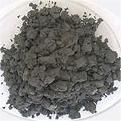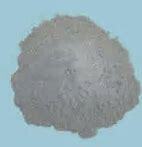High-Quality Silicon Carbide Products | Advanced Ceramic Solutions
The Secret Sauce in Crucibles: Which Silicon Carbide Reigns Supreme?
(what form of silicon carbide is used for a crucible)
Crucibles are the unsung heroes of high-temperature work. These tough containers handle everything from melting metals to brewing advanced ceramics. But what makes them so durable? The answer lies in the material they’re made of. Silicon carbide is the star player here. Not all forms of silicon carbide are the same though. Let’s dig into the type that makes crucibles nearly indestructible.
First, silicon carbide itself is a powerhouse. It’s a compound of silicon and carbon, created by heating sand and carbon at crazy-high temperatures. The result is a material that laughs in the face of heat, wear, and chemical attacks. But crucibles need more than just basic toughness. They need a specific form of silicon carbide to handle extreme conditions without cracking, melting, or reacting with whatever’s inside.
The winner here is sintered silicon carbide. This version is made by pressing silicon carbide powder into a mold and baking it at temperatures over 2000°C. The process bonds the particles tightly, creating a dense, nearly pore-free structure. Think of it like baking a perfect loaf of bread—no air bubbles, just solid, even texture. This makes sintered silicon carbide crucibles incredibly strong and resistant to thermal shock.
Why does thermal shock matter? Imagine heating a crucible to 1600°C and then cooling it rapidly. Most materials would crack or shatter. Sintered silicon carbide handles this like a champ. Its low thermal expansion means it doesn’t swell much when heated. Combined with high thermal conductivity, heat spreads evenly, avoiding stress points. This is crucial for industries like metallurgy or semiconductor manufacturing, where temperature swings are sudden and extreme.
Chemical resistance is another big deal. Sintered silicon carbide doesn’t react with acids, alkalis, or molten metals. Even nasty stuff like molten iron or aluminum won’t eat through it. This inertness keeps the contents pure and the crucible intact over countless uses. Compare this to graphite crucibles, which can oxidize at high temps, or alumina ones that might crack under stress. Sintered silicon carbide outshines them both.
Durability isn’t the only perk. These crucibles are lightweight compared to metals like tungsten or molybdenum. Handling them is easier, reducing workplace strain. They also last longer, cutting down on replacement costs. For labs and factories, this means fewer interruptions and better efficiency.
But how is sintered silicon carbide different from other types? Reaction-bonded silicon carbide is another option. It’s made by infiltrating silicon into a carbon-silicon carbide mix. While cheaper, it leaves some free silicon in the final product. This can weaken thermal and chemical resistance. Sintered silicon carbide skips the silicon filler, keeping its structure pure and performance top-notch.
The making of these crucibles is a high-tech art. Advanced sintering techniques ensure even density and minimal defects. Some manufacturers add tiny amounts of sintering aids like boron or aluminum to help the particles bond better. The result is a crucible that’s not just tough, but also precise in shape and size—key for industrial processes needing strict control.
In the real world, sintered silicon carbide crucibles are everywhere. They’re used to grow single-crystal gems for lasers, melt superalloys for jet engines, and even process nuclear fuel. Their reliability makes them a go-to in fields where failure isn’t an option.
(what form of silicon carbide is used for a crucible)
So next time you see a crucible in action, remember the science inside. It’s not just a container. It’s a marvel of engineering, built from a material that thrives where others fail. Sintered silicon carbide doesn’t just survive the heat—it owns it.





